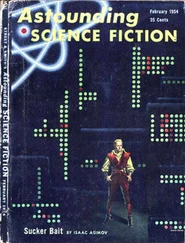Even what was first known about the comparatively consoling symmetry of the solar system, with its nonetheless evident tendency to instability and entropy, upset Sir Isaac Newton enough to make him propose that god intervened every now and then to put the orbits back on an even keel. This exposed him to teasing from Leibniz, who asked why god couldn’t have got it working right the first time around. It is, indeed, only because of the frightening emptiness elsewhere that we are bound to be impressed by the apparently unique and beautiful conditions that have allowed intelligent life to occur on earth. But then, vain as we are, we would be impressed, wouldn’t we? This vanity allows us to overlook the implacable fact that, of the other bodies in our own solar system alone, the rest are all either far too cold to support anything recognizable as life, or far too hot. The same, as it happens, is true of our own blue and rounded planetary home, where heat contends with cold to make large tracts of it into useless wasteland, and where we have come to learn that we live, and have always lived, on a climatic knife edge. Meanwhile, the sun is getting ready to explode and devour its dependent planets like some jealous chief or tribal deity. Some design!
So much for the macro-dimension. What of the micro? Ever since they were forced to take part in this argument, which they were with great reluctance, the religious have tried to echo Hamlet’s admonition to Horatio that there are more things in heaven and earth than are dreamed of by mere humans. Our side willingly concedes this point: we are prepared for discoveries in the future that will stagger our faculties even more than the vast advances in knowledge that have come to us since Darwin and Einstein. However, these discoveries will come to us in the same way—by means of patient and scrupulous and (this time, we hope) unfettered inquiry. In the meanwhile, we also have to improve our minds by the laborious exercise of refuting the latest foolishness contrived by the faithful. When the bones of prehistoric animals began to be discovered and scrutinized in the nineteenth century, there were those who said that the fossils had been placed in the rock by god, in order to test our faith. This cannot be disproved. Nor can my own pet theory that, from the patterns of behavior that are observable, we may infer a design that makes planet earth, all unknown to us, a prison colony and lunatic asylum that is employed as a dumping ground by far-off and superior civilizations. However, I was educated by Sir Karl Popper to believe that a theory that is unfalsifiable is to that extent a weak one.
Now we are being told that astonishing features, such as the human eye, cannot be the result of, so to speak, “blind” chance. As it happens, the “design” faction have chosen an example that could not be bettered. We now know a great deal about the eye, and about which creatures have it and which do not, and why. I must here for a moment give way to my friend Dr. Michael Shermer:
Evolution also posits that modern organisms should show a variety of structures from simple to complex, reflecting an evolutionary history rather than an instantaneous creation . The human eye, for example, is the result of a long and complex pathway that goes back hundreds of millions of years. Initially a simple eyespot with a handful of light-sensitive cells that provided information to the organism about an important source of the light; it developed into a recessed eyespot, where a small surface indentation filled with light-sensitive cells provided additional data on the direction of light; then into a deep recession eyespot, where additional cells at greater depth provide more accurate information about the environment; then into a pinhole camera eye that is able to focus an image on the back of a deeply-recessed layer of light-sensitive cells; then into a pinhole lens eye that is able to focus the image; then into a complex eye found in such modern mammals as humans.
All the intermediate stages of this process have been located in other creatures, and sophisticated computer models have been developed which have tested the theory and shown that it actually “works.” There is a further proof of the evolution of the eye, as Shermer points out. This is the ineptitude of its “design”:
The anatomy of the human eye, in fact, shows anything but “intelligence” in its design. It is built upside down and backwards, requiring photons of light to travel through the cornea, lens, aquaeous fluid, blood vessels, ganglion cells, amacrine cells, horizontal cells, and bipolar cells before they reach the light-sensitive rods and cones that transduce the light signal into neural impulses—which are then sent to the visual cortex at the back of the brain for processing into meaningful patterns. For optimal vision, why would an intelligent designer have built an eye upside down and backwards?
It is because we evolved from sightless bacteria, now found to share our DNA, that we are so myopic. These are the same ill-designed optics, complete with deliberately “designed” retinal blind spot, through which earlier humans claimed to have “seen” miracles “with their own eyes.” The problem in those cases was located elsewhere in the cortex, but we must never forget Charles Darwin’s injunction that even the most highly evolved of us will continue to carry “the indelible stamp of their lowly origin.”
I would add to Shermer that, though it is true we are the highest and smartest animals, ospreys have eyes we have calculated to be sixty times more powerful and sophisticated than our own and that blindness, often caused by microscopic parasites that are themselves miracles of ingenuity, is one of the oldest and most tragic disorders known to man. And why award the superior eye (or in the case of the cat or bat, also the ear) to the inferior species? The osprey can swoop accurately on a fast-moving fish that it has detected underwater from many, many feet above, all the while maneuvering with its extraordinary wings. Ospreys have almost been exterminated by man, while you yourself can be born as blind as a worm and still become a pious and observant Methodist, for example.
“To suppose that the eye,” wrote Charles Darwin,
with all its inimitable contrivances for adjusting the focus to different distances, for admitting different amounts of light, and for the correction of spherical and chromatic aberration, could have been formed by natural selection, seems, I freely confess, absurd in the highest possible degree.
He wrote this in an essay titled “Organs of Extreme Perfection and Complication.” Since that time, the evolution of the eye has become almost a separate department of study. And why should it not? It is immensely fascinating and rewarding to know that at least forty different sets of eyes, and possibly sixty different sets, have evolved in quite distinct and parallel, if comparable, ways. Dr. Daniel Nilsson, perhaps the foremost authority on the subject, has found among other things that three entirely different groups of fish have independently developed four eyes. One of these sea creatures, Bathylychnops exilis , possesses a pair of eyes that look outward, and another pair of eyes (set in the wall of the main two) that direct their gaze straight downward. This would be an encumbrance to most animals, but it has some obvious advantages for an aquatic one. And it is highly important to notice that the embryological development of the second set of eyes is not a copy or a miniature of the first set, but an entirely different evolution. As Dr. Nilsson puts it in a letter to Richard Dawkins: “This species has reinvented the lens despite the fact that it already had one. It serves as a good support for the view that lenses are not difficult to evolve.” A creative deity, of course, would have been more likely to double the complement of optics in the first place, which would have left us with nothing to wonder about, or to discover. Or as Darwin went on to say, in the same essay:
Читать дальше












